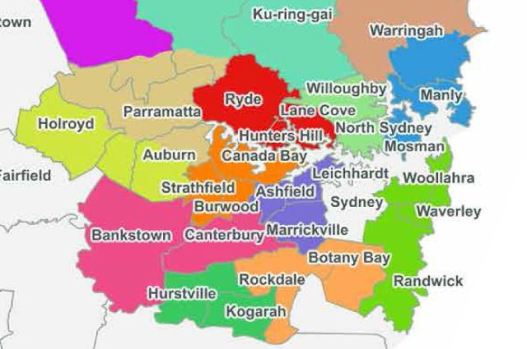By Julian Bajkowski
Property development and finance lobby group Urban Task Force has upped the ante on the topic of forced local government amalgamations in NSW after it gave prominent reports pointing to compulsory mergers a conspicuously wide berth in a statement issued on Tuesday afternoon.
The group has reiterated its position that “clusters” of councils which can access shared services are the most preferable way the achieve administrative efficiencies and financial sustainability after the Daily Telegraph reported that the O’Farrell government is poised to backflip on its key election promise of not forcibly merging councils and municipalities.
The overtly cool response from powerful property and finance interests equates to a strong signal to NSW Local Government Minister Don Page that a large element of the business community does not want a repeat of Queensland-style amalgamations that saw rates rise in many areas.
The Newman government is now in the process of attempting to untangle the forced mergers by giving communities a say as to whether the widely detested super councils should stay or be broken up.
“My worry is that it’s not just [a matter of] amalgamate and suddenly everything will be a lot better. It’s not necessarily going to make anything better at all,” Urban Task Force chief executive Chris Johnson told Government News.
Mr Johnson said that the British debate on localism provided some useful clues to community expectations of local government that needed to be heeded.
“The debate in the UK about localism has really been about making communities feel relevant and part of the process of governance. I think that’s what the NSW government needs to be careful of here – that in reforming local government they don’t lose the relationship that communities have with their local council,” he said.
Mr Johnson said that while council structures would almost certainly be different if they could be drawn again from scratch, the reality now is that many people are used to their councils as they stand.
“If small councils want to amalgamate they should be encouraged to do this,” Mr Johnson said. “The real saving will come from groups of councils, becoming more efficient through a shared service centre particularly for planning services.”
However developers still have a firm interest and strong views on how potential reforms should look and where they should be.
“The strategic planning for Sydney will need to work with clusters of councils and it is this grouping that should become the basis of regional groupings of councils with shared service centres. This would lead to clusters of 6 or 7 councils or even less following amalgamation,” Mr Johnson said.
“The ideal area to start restructuring will be along Parramatta Road where Ashfield, Burwood, Strathfield and Canada Bay councils will all be affected by the construction of the West Connex and the urban renewal that will follow. These four councils can begin by having a shared service centre with one planning centre of excellence. Over time the four could become a single entity if the community supported this.”
Urban Task Force now wants the State Government to determine the boundaries of any groupings of councils “so that this is the same for all activities including strategic planning, Joint Regional Planning Panels, public transport, water management and economic development. “
“We need an efficient structure for those functions that require both levels of government to work together,” Mr Johnson said.
Comment below to have your say on this story.
If you have a news story or tip-off, get in touch at editorial@governmentnews.com.au.
Sign up to the Government News newsletter
Most read
Scathing report finds little has changed at PwC
Qld council welcomes progress on massive battery system
Inquiry to consider how federal govt can address councils’ sustainability issues
‘Local’ procurement turns out not to be so local, committee hears
Another report finds local government falling down on cyber security

